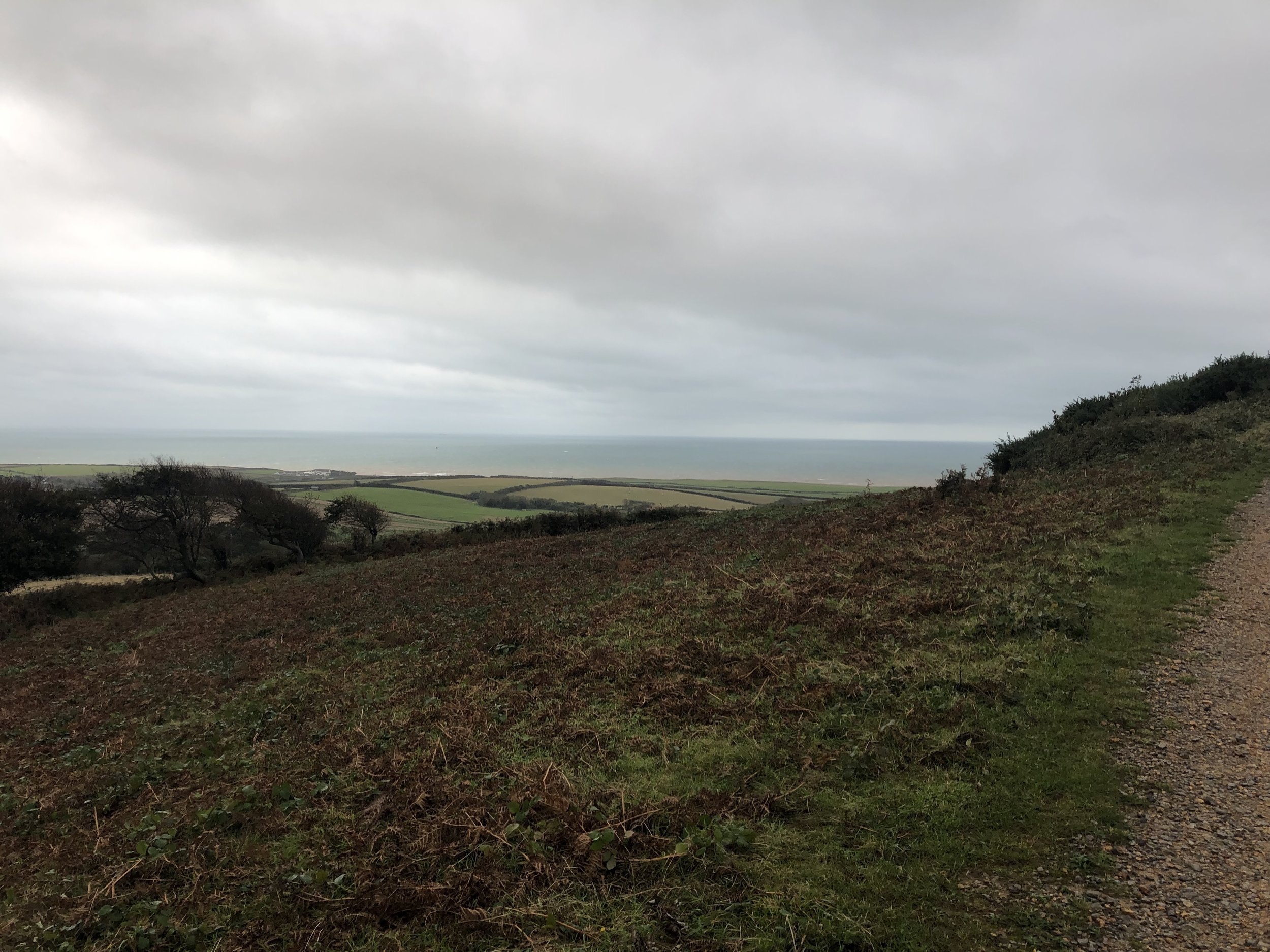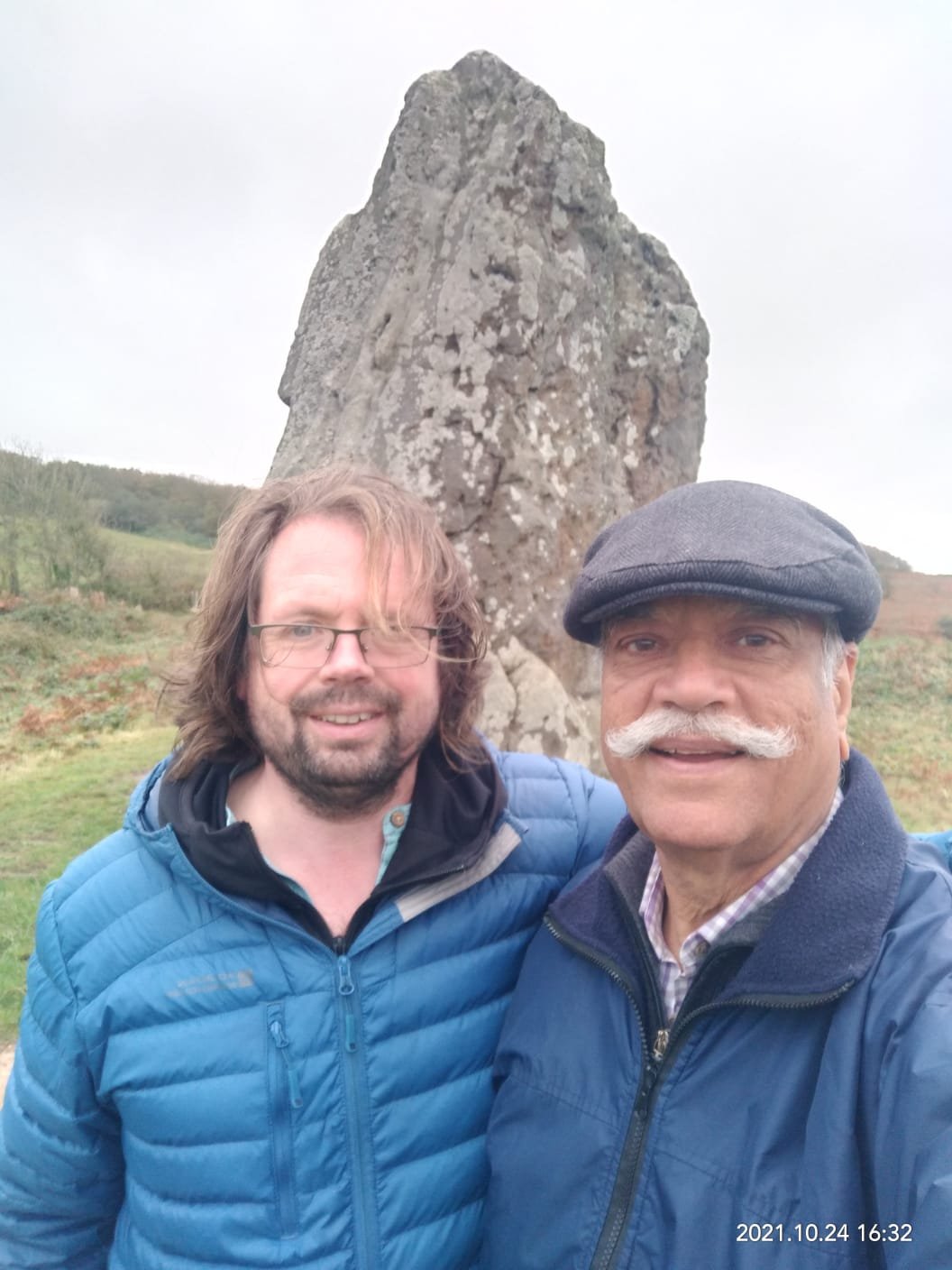Mark Sheerin (Member no: 2850)
The Long Stone, Isle of Wight
Set in a rolling, agrarian landscape, on the parochial Isle of Wight, the Long Stone can be dated back 6,000 years. And although it has been once dislodged and once perhaps moved, it is still possessed of enough life and presence to temper the bleakness of a late October hike
By way of a preamble, my father-in-law, Deepak, has shown me some of the most illustrious sights of his hometown, Delhi. These have included Qtub Minar, the Tomb of Humayun, and the Red Fort. They were wonderful, but hot, dusty and crowded. In 2021, I offered a homegrown landmark by showing Deepak a pair of unadorned rocks, in an overlooked outpost of Old England, with views of a pitiless grey sea, in weather that was both cold and threatening rain.
Set in a rolling, agrarian landscape, on the parochial Isle of Wight, the Long Stone can be dated back 6,000 years. And although it has been once dislodged and once perhaps moved, it is still possessed of enough life and presence to temper the bleakness of a late October hike. Underwhelming in appearance, perhaps, when compared with the glorious evidence of the Mughal age in India, perhaps, these standing stones can still inspire.
They are said, for instance, to be the ammunition with which the Devil and Saint Catherine were to compete, from a nearby hill, in a throwing contest. Our girl, Catherine, won this round of good versus evil. Her four-metre menhir, the longest of the Long Stone stones, travelled furthest. The devil’s effort, which lies recumbent and vanquished at the base, is just under three metres. The Long Stone is morally upright stone as well, not just physically upended.
Both projectiles were once located at the end of a funerary barrow. The local community would bring their dead to where they could be picked apart by birds and wild animals before their bones were laid to final rest beneath these downlands.
The dead supplied their frisson. It would soon be dark. We were at some distance from the car, where the rest of my family had opted to wait… in a lonely car park off a narrow lane. I was mildly anxious about getting lost, getting caught in the rain, falling darkness, trespassing, and so on. It was late afternoon, my phone battery was running out, and if Google Maps was working at all, it was doing so precariously.
But my mood change was positive when we finally got to where we wanted to be. The Long Stone felt somehow populous as if we were no longer the only ones around. Not for nothing is it also referred to as the moot stone, or Mottistone. Moot is Saxon for meeting. It is likely my mind conjured this presence. I may even have day-dreamed of spirits from the barrow. And because the stones were reassuringly solid, yet soft with lichen, and still warm from sunlight earlier in the day, my background fears were stilled.
Against the drizzle and the desolation of an autumn landscape in rural England, Catherine’s rock stands strong. It looms in the middle of nowhere, seeming to draw power from its very obscurity. The only signage is a fading interpretation panel from the National Trust. This is propped on a stand, a respectful distance from the stones. After reading, we considered its subject from a range of angles, took a couple of photos, and wondered at the prehistoric engineering feat.
The Long Stone may not be heaving with as many visitors as the Taj Mahal in Agra, another site Deepak has shown me. But it shares a certain madness of conception and execution. I’m really glad we tracked down this chunk of displaced sandstone, as mad in itself as that venture might have seemed.




